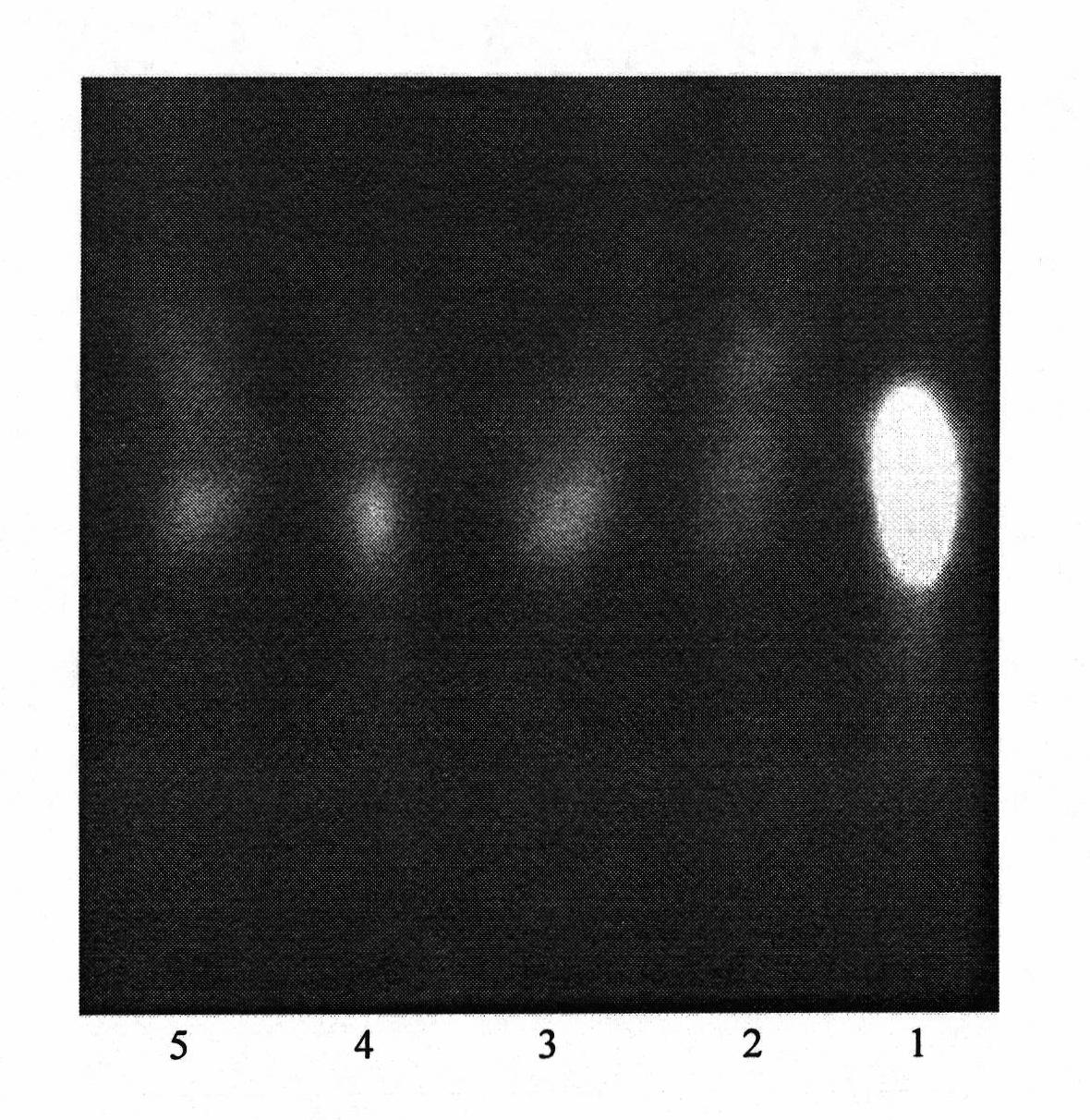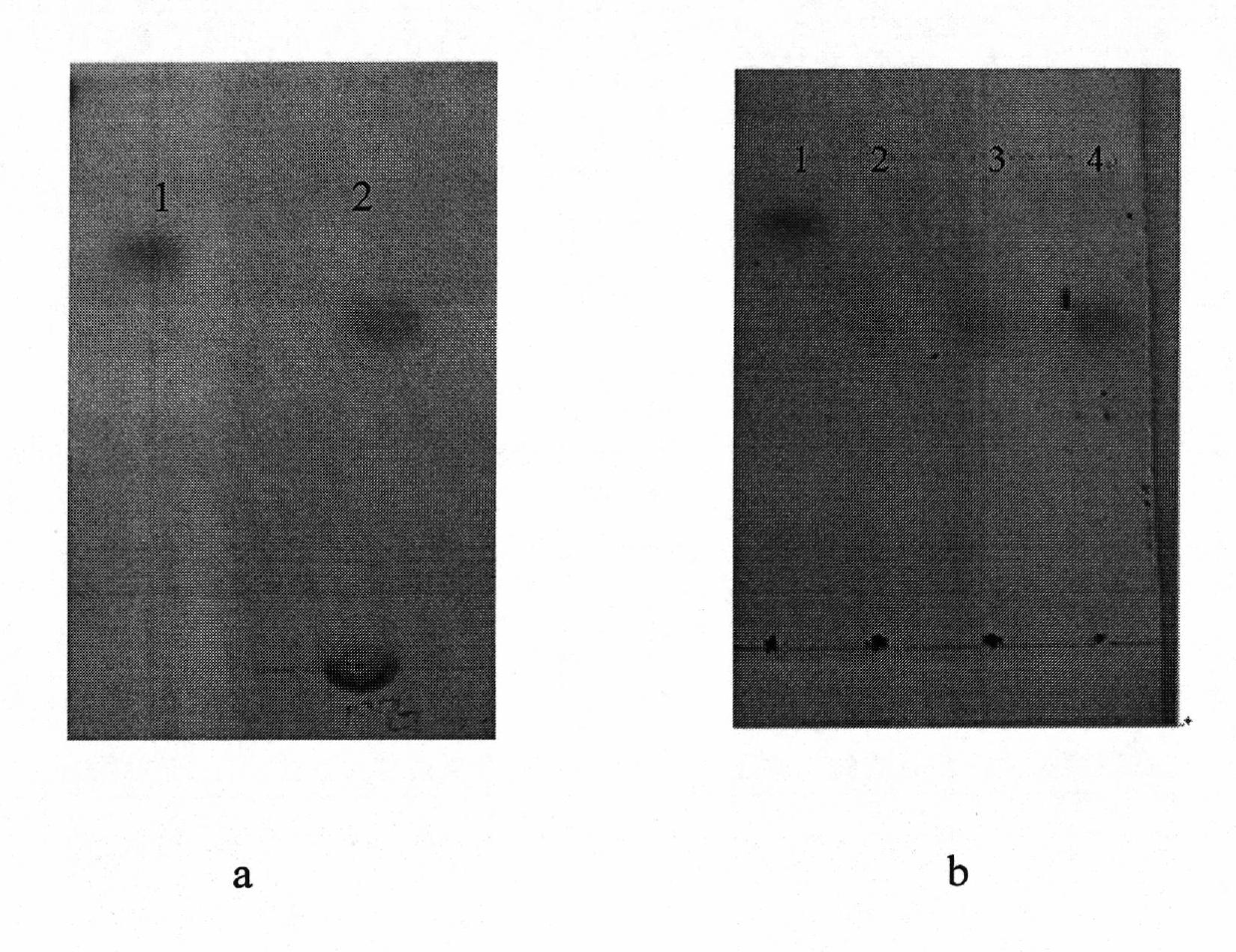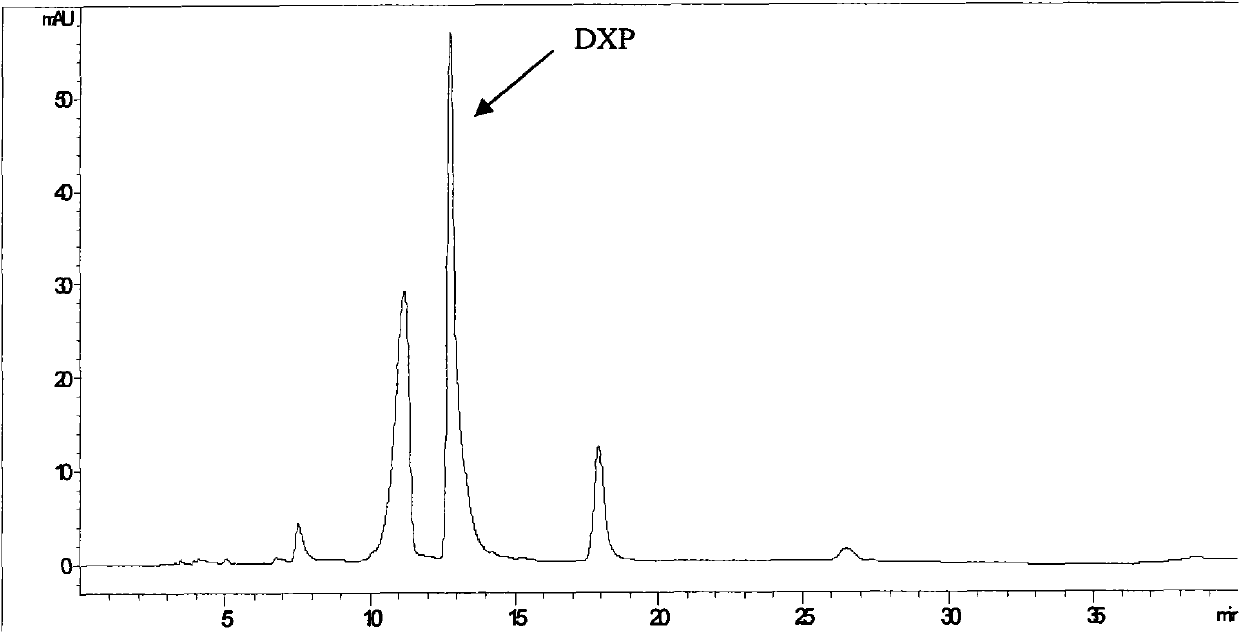Method for screening 1-deoxidation-D-xylulose5-phosphoric acid reduction isomerization enzyme inhibitor from plant extract
A plant extract and isomerase technology, which is applied in the field of antibiotic screening, can solve the problems of large and expensive, high detection cost, etc., and achieve the effect of strong feasibility and simple operation
- Summary
- Abstract
- Description
- Claims
- Application Information
AI Technical Summary
Problems solved by technology
Method used
Image
Examples
Embodiment 1
[0055] Embodiment 1: PC method screening DXR inhibitor
[0056] 1) Preparation of samples for detection of DXR inhibitors
[0057] In this design, a reaction system with a volume of 50-200 μl is used. The reaction system is shown in Table 1, and the reaction is carried out in a water bath at 25-40° C. for 2-16 hours to prepare samples for detecting DXR inhibitors.
[0058] Table 1 Reaction system
[0059] Reactant
Final concentration
DXP
5-20mM
NADPH
5-20mM
Mg 2+
5-50mM
DXR
1-10μg / μl
Plant extracts
1-100μg / μl
Tris-HCl (pH=6-8)
50-500mM
[0060] The optimal conditions are: 100 μl reaction system, the final concentration of DXP, NADPH, and Mg2+ is 10 mM, the final concentration of DXR is 1.0 μg / μl, and the rest can be adjusted according to the experimental design. Tris-HCl with a pH of about 7.4 is used as the buffer because it is closest to the physiological environment and can maximize th...
Embodiment 2
[0068] Embodiment 2: TLC method screening DXR inhibitor
[0069] 1) Repeat step 1) of the above PC method to prepare samples for detection of DXR inhibitors, and then pretreat the samples: add 5-50U phosphatase to the reaction system, and continue the reaction in a water bath at 30-40°C for 2 -8h, evaporate the water in the reaction system under reduced pressure, and redissolve the residue with 50-300 μl of organic solvent. The preferred conditions are: for a 100 μl reaction system, after adding 10 U alkaline phosphatase, continue the reaction in a 37° C. water bath for 4 hours, evaporate the water in the reaction system under reduced pressure, and redissolve the residue in 100 μl methanol.
[0070] 2) Repeat step 2) of the above PC method to prepare a control sample, which is pretreated in the same way.
[0071] 3) Take the reaction solution without plant extract as a control, take 0.5-2 μl of the above methanol extract for spotting, and select the expansion system as chloro...
Embodiment 3
[0074] Embodiment 3: HPLC method screens the inhibitor of DXR
[0075] 1) Repeat step 1) of the PC method to prepare samples for detecting DXR inhibitors.
[0076] 2) Repeat step 2) of the above PC method to prepare a control sample.
[0077] 3) Take 2-10 μl of sample, dilute it at 1:10, filter it into the HPLC system, and treat the control sample in the same way. The optimal injection volume is 20 μl;
[0078] Chromatographic conditions: mobile phase A: 5-20% methanol aqueous solution containing 10-30mM TBAS (tetra-n-butyl ammonium bisulfate); mobile phase B: 40-70% methanol aqueous solution containing 10-30mM TBAS; flow rate: 0.3- 3mL / min; injection volume: 10-100μl; column temperature: 20-40°C; detector: DAD ultraviolet detector (Agilent); detection wavelength: 210-280nm. The preferred conditions are: mobile phase A: 5% aqueous methanol containing 10mM TBAS; mobile phase B: 70% aqueous methanol containing 10mM TBAS, flow rate: 0.75mL / min; injection volume: 50μl; column t...
PUM
 Login to View More
Login to View More Abstract
Description
Claims
Application Information
 Login to View More
Login to View More - R&D
- Intellectual Property
- Life Sciences
- Materials
- Tech Scout
- Unparalleled Data Quality
- Higher Quality Content
- 60% Fewer Hallucinations
Browse by: Latest US Patents, China's latest patents, Technical Efficacy Thesaurus, Application Domain, Technology Topic, Popular Technical Reports.
© 2025 PatSnap. All rights reserved.Legal|Privacy policy|Modern Slavery Act Transparency Statement|Sitemap|About US| Contact US: help@patsnap.com



